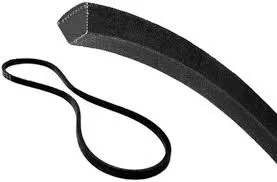- Arabic
- French
- Russian
- Spanish
- Portuguese
- Turkish
- Armenian
- English
- Albanian
- Amharic
- Azerbaijani
- Basque
- Belarusian
- Bengali
- Bosnian
- Bulgarian
- Catalan
- Cebuano
- Corsican
- Croatian
- Czech
- Danish
- Dutch
- Afrikaans
- Esperanto
- Estonian
- Finnish
- Frisian
- Galician
- Georgian
- German
- Greek
- Gujarati
- Haitian Creole
- hausa
- hawaiian
- Hebrew
- Hindi
- Miao
- Hungarian
- Icelandic
- igbo
- Indonesian
- irish
- Italian
- Japanese
- Javanese
- Kannada
- kazakh
- Khmer
- Rwandese
- Korean
- Kurdish
- Kyrgyz
- Lao
- Latin
- Latvian
- Lithuanian
- Luxembourgish
- Macedonian
- Malgashi
- Malay
- Malayalam
- Maltese
- Maori
- Marathi
- Mongolian
- Myanmar
- Nepali
- Norwegian
- Norwegian
- Occitan
- Pashto
- Persian
- Polish
- Punjabi
- Romanian
- Samoan
- Scottish Gaelic
- Serbian
- Sesotho
- Shona
- Sindhi
- Sinhala
- Slovak
- Slovenian
- Somali
- Sundanese
- Swahili
- Swedish
- Tagalog
- Tajik
- Tamil
- Tatar
- Telugu
- Thai
- Turkmen
- Ukrainian
- Urdu
- Uighur
- Uzbek
- Vietnamese
- Welsh
- Bantu
- Yiddish
- Yoruba
- Zulu
ነሐሴ . 13, 2024 22:03 Back to list
Visual Guide to Timing Belt Replacement with Step-by-Step Images and Essential Tips for Success
Understanding Timing Belt Replacement A Comprehensive Guide
The timing belt is a critical component in an internal combustion engine. It connects the crankshaft to the camshaft and ensures that the engine's valves open and close at the correct times during each cylinder's intake and exhaust strokes. Over time, however, the timing belt can wear out, become frayed, or even break. This can lead to severe engine damage, making regular replacement essential.
The Importance of a Timing Belt
A timing belt is made of reinforced rubber and is designed to withstand high temperatures and friction. It operates in a high-stress environment and is subject to significant wear and tear. Manufacturers typically recommend replacing the timing belt every 60,000 to 100,000 miles, depending on the vehicle model. Ignoring these recommendations can result in catastrophic engine failure and costly repairs.
Visualizing the Replacement Process
Replacing a timing belt may seem daunting, but with the right tools and a little patience, it’s a task that can be accomplished by those with decent mechanical skills. Before diving into the process, it’s essential to gather tools such as a socket set, wrench set, and sometimes, specialized tools depending on the vehicle. Additionally, having a repair manual for the specific vehicle can be extremely helpful.
The replacement process typically involves several key steps
1. Safety First Before starting, ensure the vehicle is on a flat surface, and the engine is cool. Always disconnect the battery to prevent any electrical shorts. 2. Accessing the Timing Belt The first task is to remove any components obstructing access to the timing belt cover. This may include the engine mounts, belts, and other components like the crankshaft pulleys.
timing belt replacement pictures

3. Alignment Marks Before removing the old timing belt, it’s crucial to mark the alignment of the camshaft and crankshaft pulleys. Most engines have timing marks that should be aligned before the belt is removed. Taking pictures of these marks can serve as a helpful reference during reassembly.
4. Removing the Old Belt After ensuring everything is marked and accessible, carefully remove the old timing belt. Check for any wear on the pulleys and tensioners as it’s advisable to replace these components if they show signs of wear.
5. Installing the New Belt With the old belt removed, place the new timing belt on the pulleys, ensuring it is properly aligned according to the marks made earlier. It's essential to ensure that there is proper tension on the belt, as both too much and too little tension can lead to issues.
6. Reassembly Once the new timing belt is in place, reattach all components in the reverse order of removal. Double-check to ensure all tools are removed from the engine compartment before starting the engine.
7. Testing After reassembly, reconnect the battery and start the engine. Listen for any unusual noises and ensure everything is functioning smoothly. It’s advisable to take the vehicle for a short drive to verify that the timing belt replacement has been successful.
Conclusion
Replacing a timing belt is an essential maintenance task that can prevent severe engine damage in the long run. While the process may seem complex, visual aids such as pictures and diagrams, along with a well-structured guide, can make it manageable. Regularly checking the timing belt's condition and adhering to manufacturer recommendations for replacement can save car owners time and money in the long haul. Whether you are a seasoned mechanic or a DIY enthusiast, understanding the timing belt replacement process is crucial for maintaining the health of your engine.
-
Korean Auto Parts Timing Belt 24312-37500 For Hyundai/Kia
NewsMar.07,2025
-
7PK2300 90916-T2024 RIBBED BELT POLY V BELT PK BELT
NewsMar.07,2025
-
Chinese Auto Belt Factory 310-2M-22 For BMW/Mercedes-Benz
NewsMar.07,2025
-
Chinese Auto Belt Factory 310-2M-22 For BMW/Mercedes-Benz
NewsMar.07,2025
-
90916-02660 PK Belt 6PK1680 For Toyota
NewsMar.07,2025
-
drive belt serpentine belt
NewsMar.07,2025

